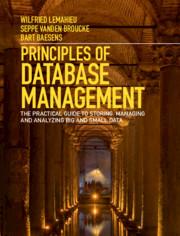One newer and promising NoSQL database is VoltDB, as it tries to combine the best aspects of
Question:
One newer and promising NoSQL database is VoltDB, as it tries to combine the best aspects of RDBMSs and the NoSQL movement. Its documentation states the following:
As a fully ACID, distributed SQL database, VoltDB must either commit or rollback 100% of all transactions. There can be no partial applications, which means the changes made by all SQL statements must be complete and visible at all live replicas, or none of the changes can be visible. A transaction commits once VoltDB confirms it has successfully completed at all replicas of all involved partitions. Once a transaction is confirmed at all replicas, VoltDB sends a confirmation message to the calling client.
VoltDB must confirm transactions that have completed at all replicas for a given partition. If a given partition is unable to confirm it completed a transaction within a user-specified time, VoltDB’s cluster membership consensus kicks in and one or more nodes are removed from the cluster.
The result is that all replicas move in lockstep. They do the same transactions, in the same order, as fast as they can. If they fall out of lockstep they are actively ejected from the cluster. Note this is different from systems that require a quorum of replicas to do a write. There are benefits and tradeoffs to the VoltDB approach that are intentional.
Link this explanation to concepts we have discussed in this chapter. How does VoltDB achieve transaction consistency? Why might the “lockstep” approach of VoltDB be better than the “quorum”-based approach?
Step by Step Answer:

Principles Of Database Management The Practical Guide To Storing Managing And Analyzing Big And Small Data
ISBN: 9781107186125
1st Edition
Authors: Wilfried Lemahieu, Seppe Vanden Broucke, Bart Baesens





